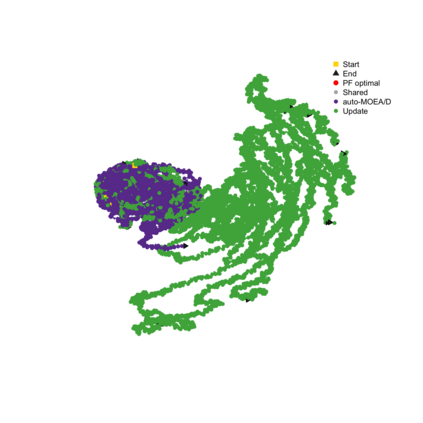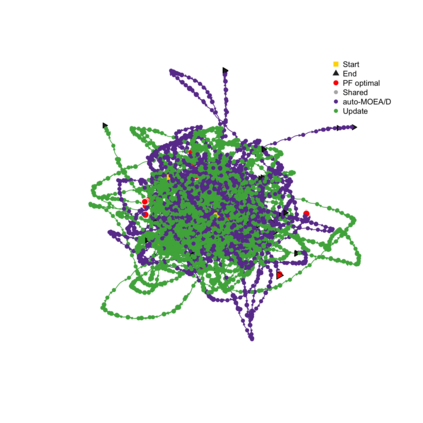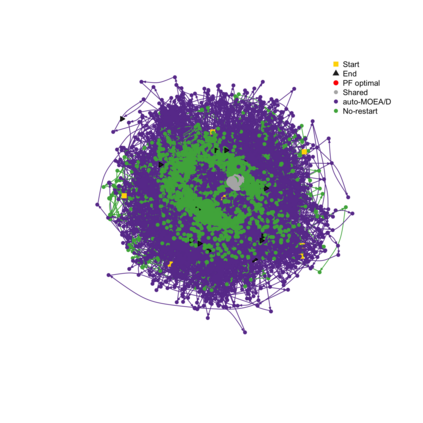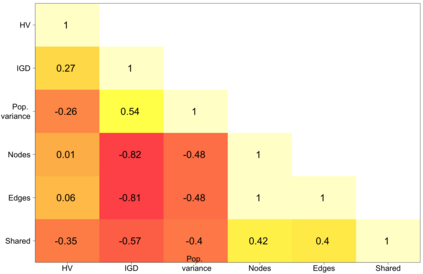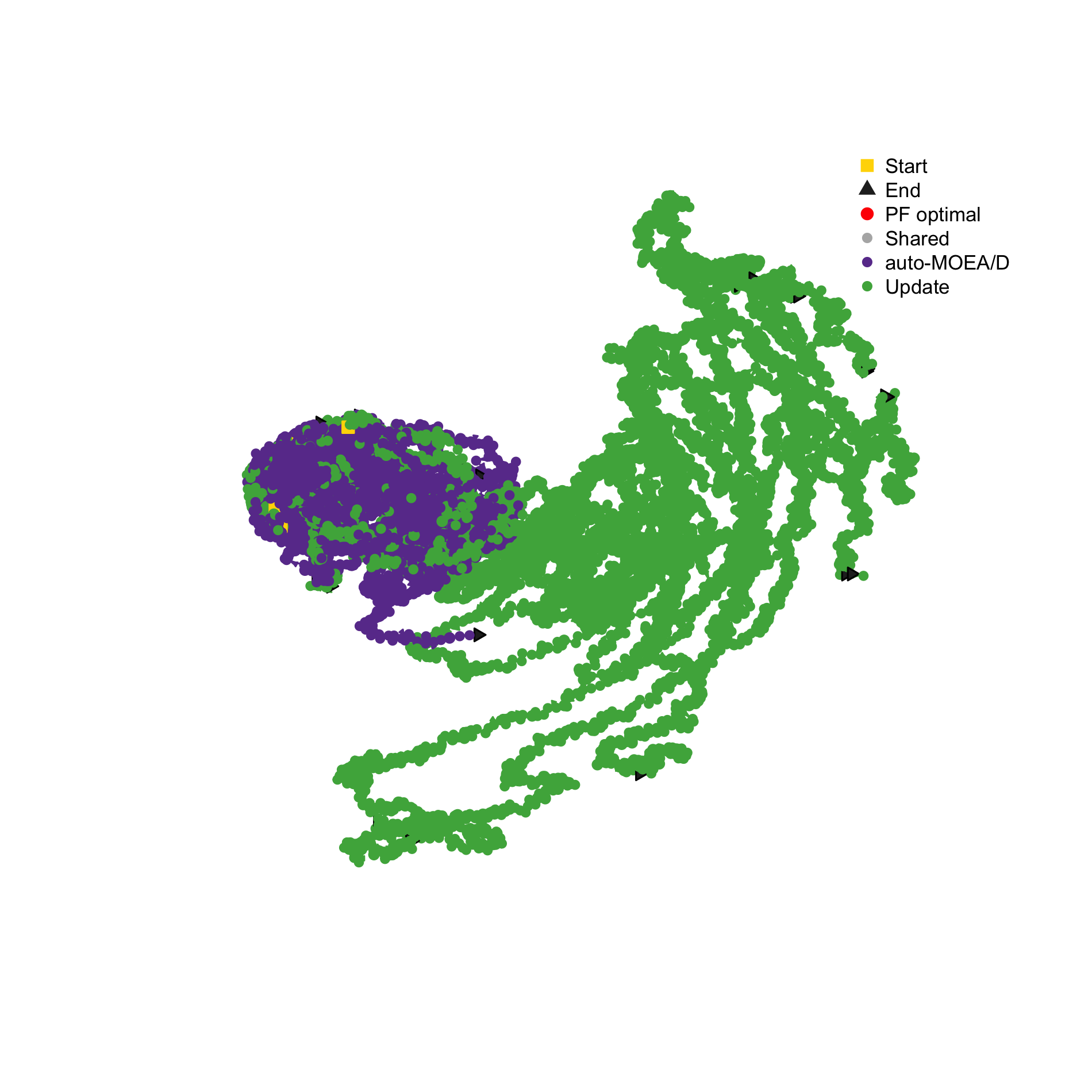The performance of multiobjective algorithms varies across problems, making it hard to develop new algorithms or apply existing ones to new problems. To simplify the development and application of new multiobjective algorithms, there has been an increasing interest in their automatic design from component parts. These automatically designed metaheuristics can outperform their human-developed counterparts. However, it is still uncertain what are the most influential components leading to their performance improvement. This study introduces a new methodology to investigate the effects of the final configuration of an automatically designed algorithm. We apply this methodology to a well-performing Multiobjective Evolutionary Algorithm Based on Decomposition (MOEA/D) designed by the irace package on nine constrained problems. We then contrast the impact of the algorithm components in terms of their Search Trajectory Networks (STNs), the diversity of the population, and the hypervolume. Our results indicate that the most influential components were the restart and update strategies, with higher increments in performance and more distinct metric values. Also, their relative influence depends on the problem difficulty: not using the restart strategy was more influential in problems where MOEA/D performs better; while the update strategy was more influential in problems where MOEA/D performs the worst.
翻译:多种客观算法的性能因问题而不同,因此很难开发新的算法,或将现有算法应用于新的问题。为了简化新的多客观算法的开发和应用,从组件部分对自动设计的兴趣日益浓厚。这些自动设计的计量经济学能够优于其开发的对等单位。然而,仍然不确定哪些因素最有影响,导致其性能的改善。本研究引入了一种新的方法,以调查自动设计的算法的最终配置的影响。我们用这种方法对由irace 软件包针对9个受限问题设计的基于分解(MOEA/D)的良好多目标进化阿尔哥里希姆(MOEA/D)应用了这种方法。我们随后从搜索轨迹网络(STNs)、人口多样性和超大量的角度对比了这些算法组成部分的影响。我们的结果显示,最有影响的部分是重新启动和更新战略,其性能增加,以及更明确的计量值。此外,它们的相对影响取决于问题的困难:在MOEA/D最坏的状态下,不使用重新启动战略的影响更大。

